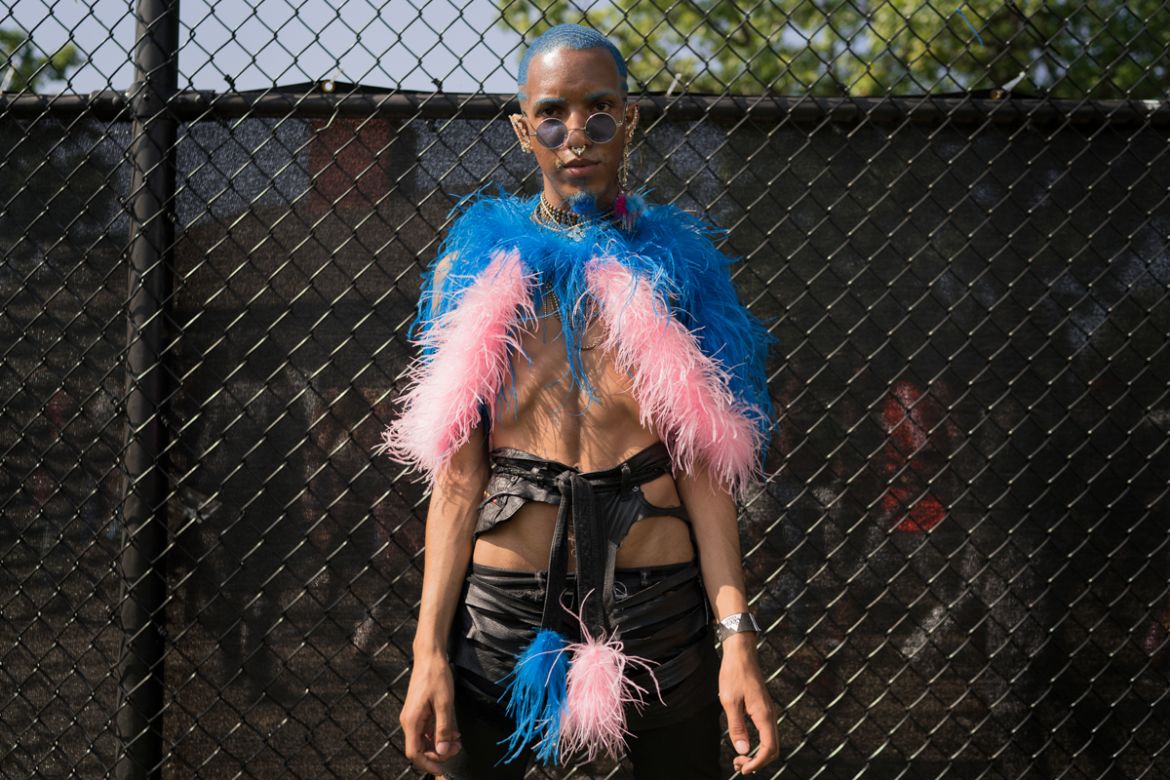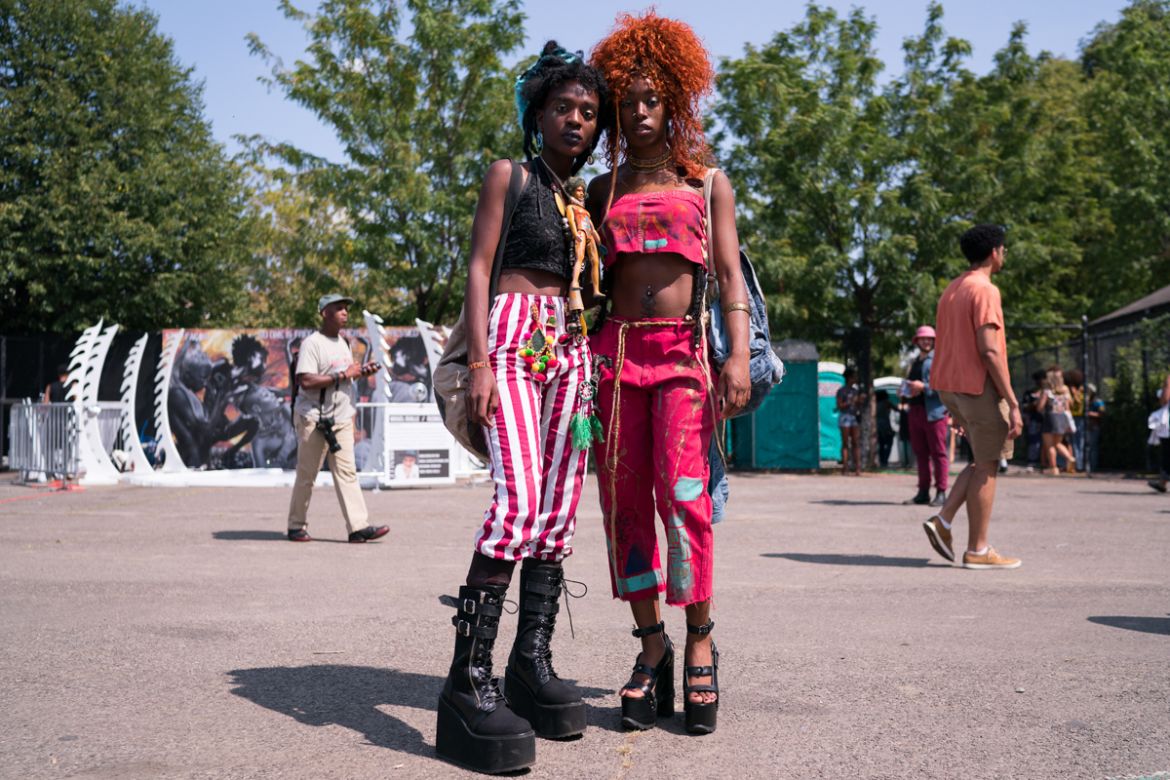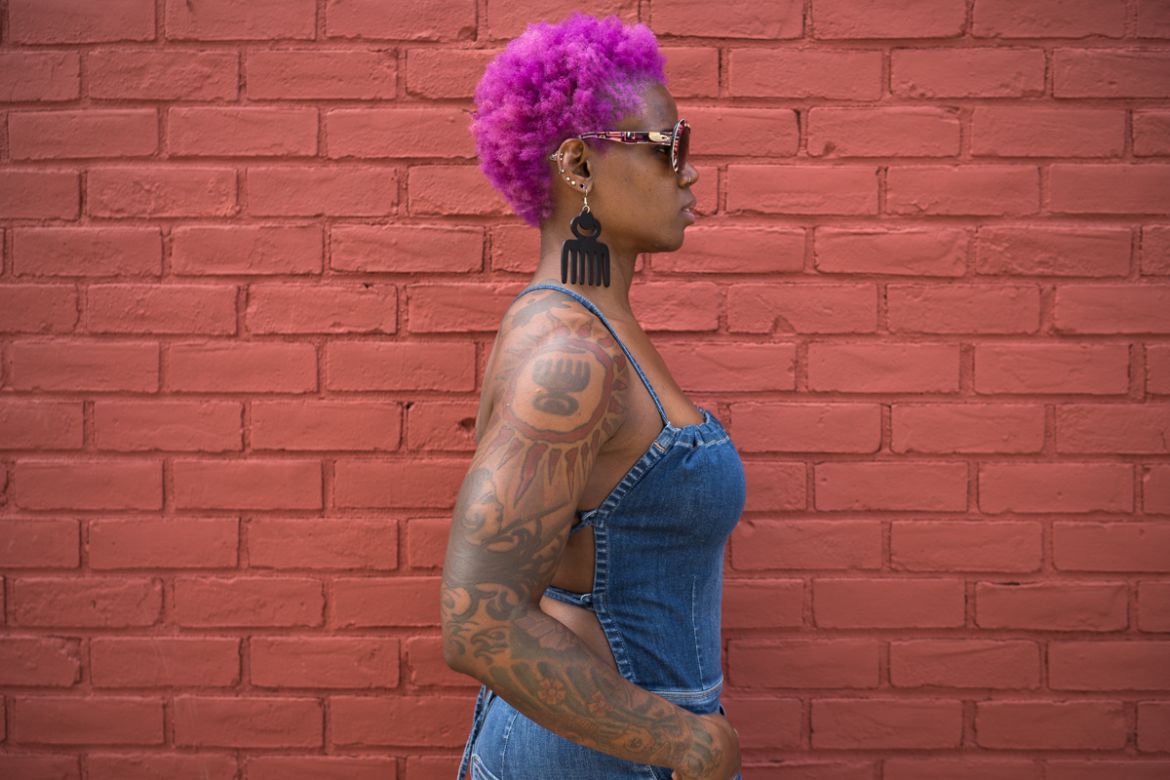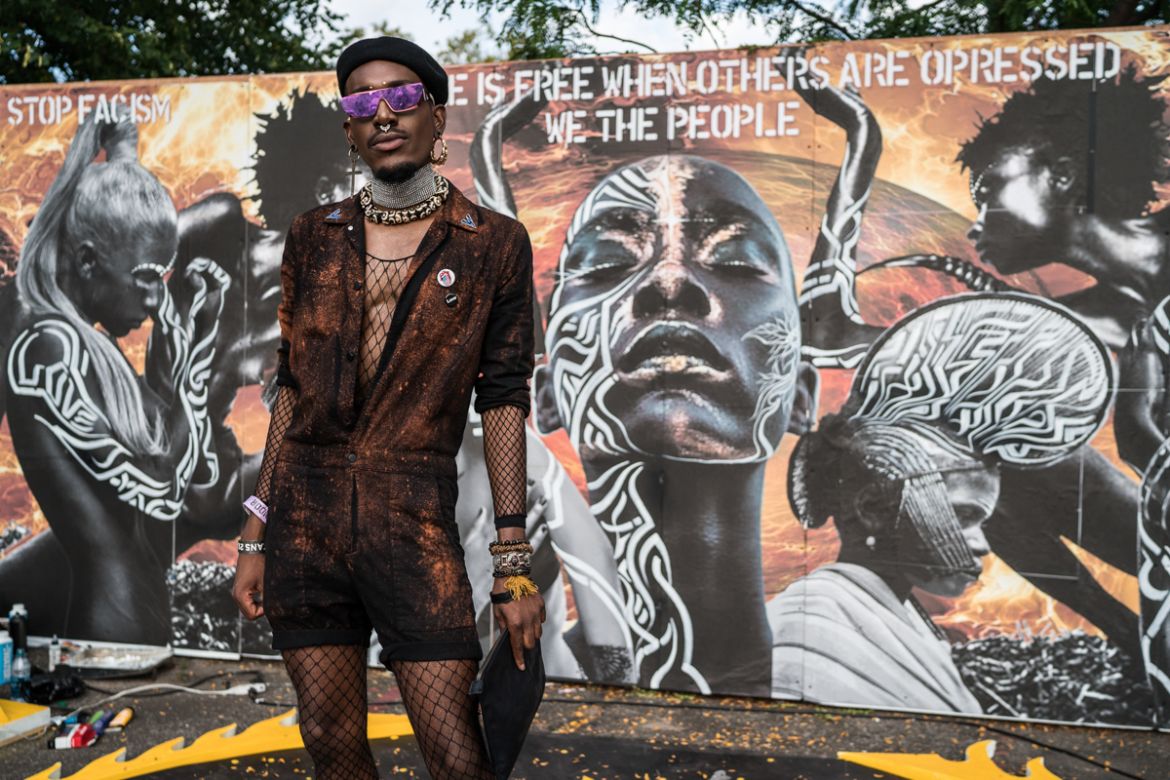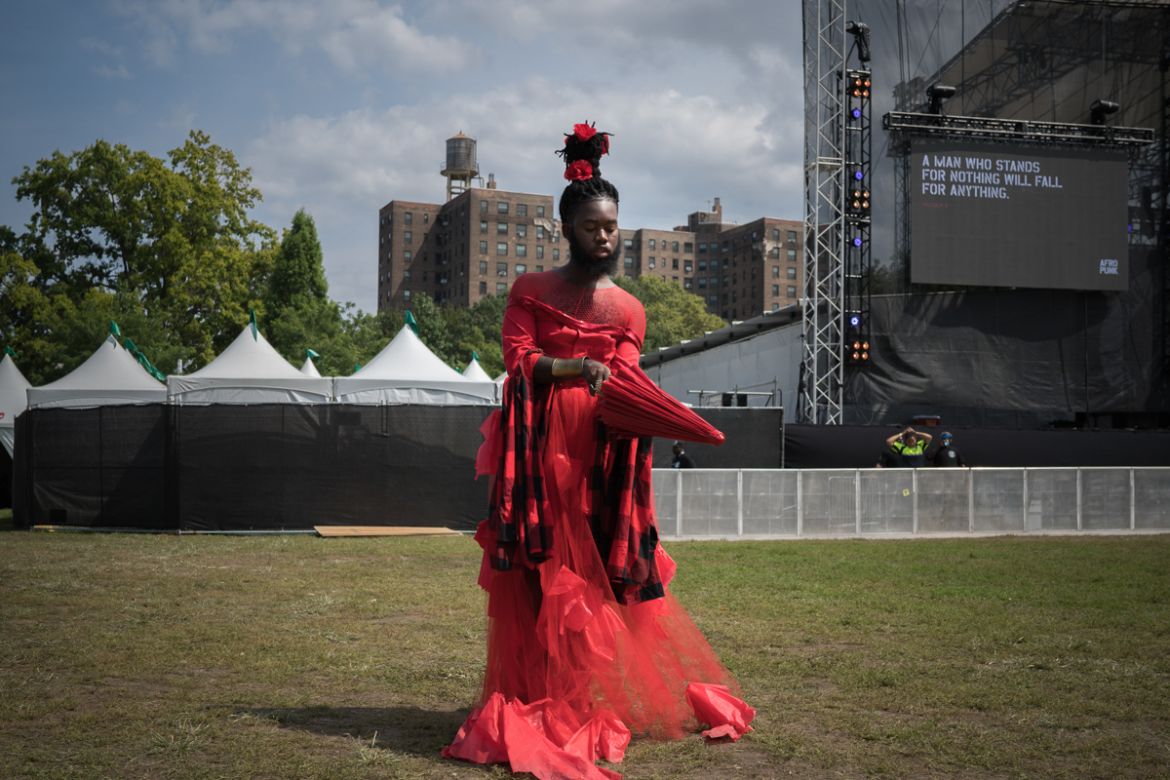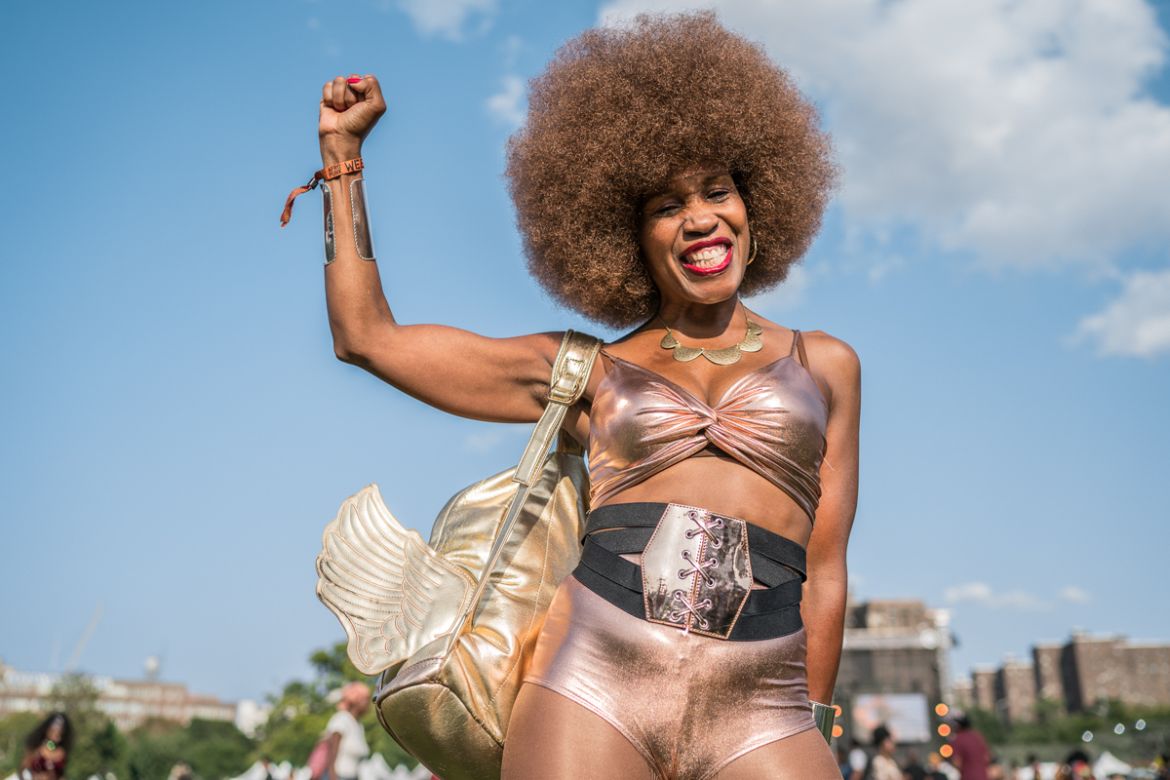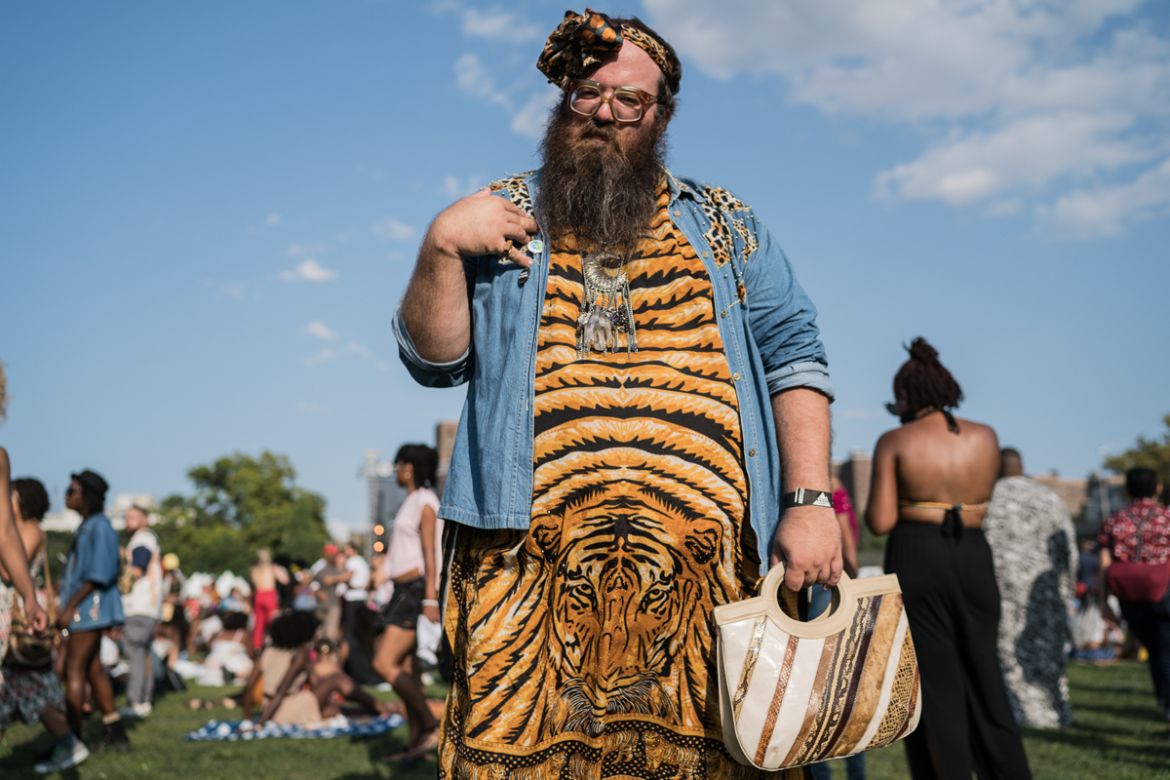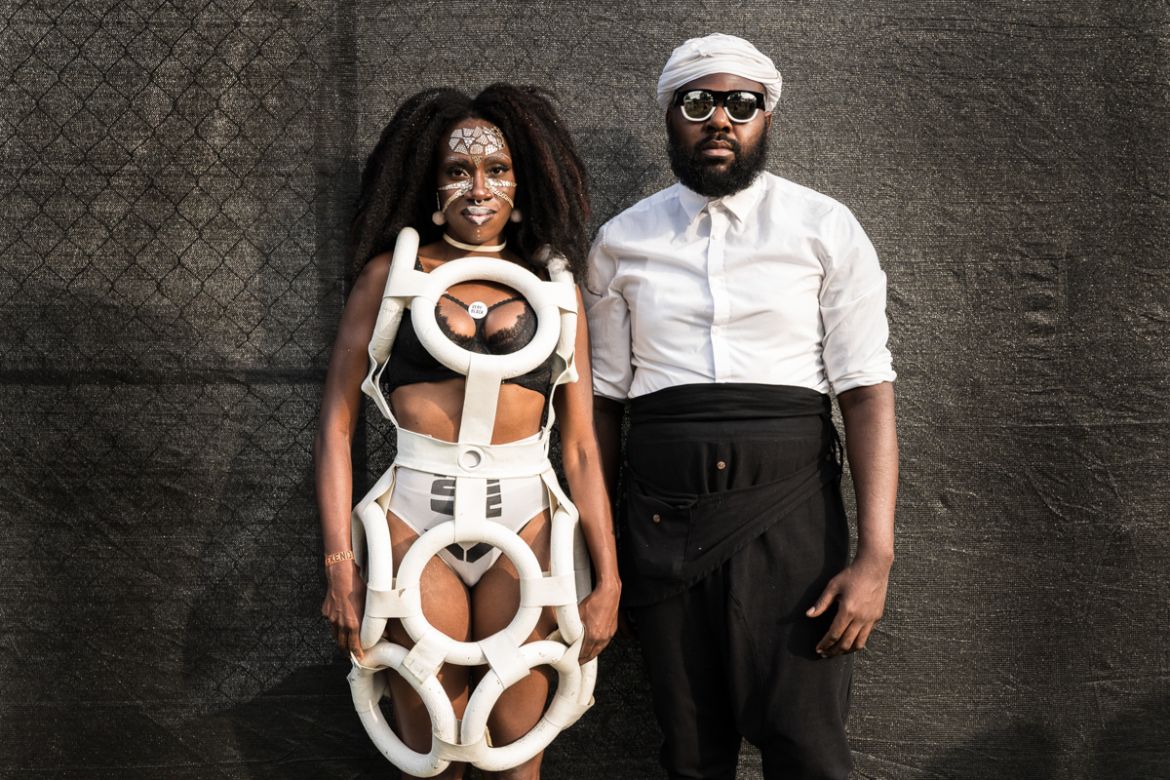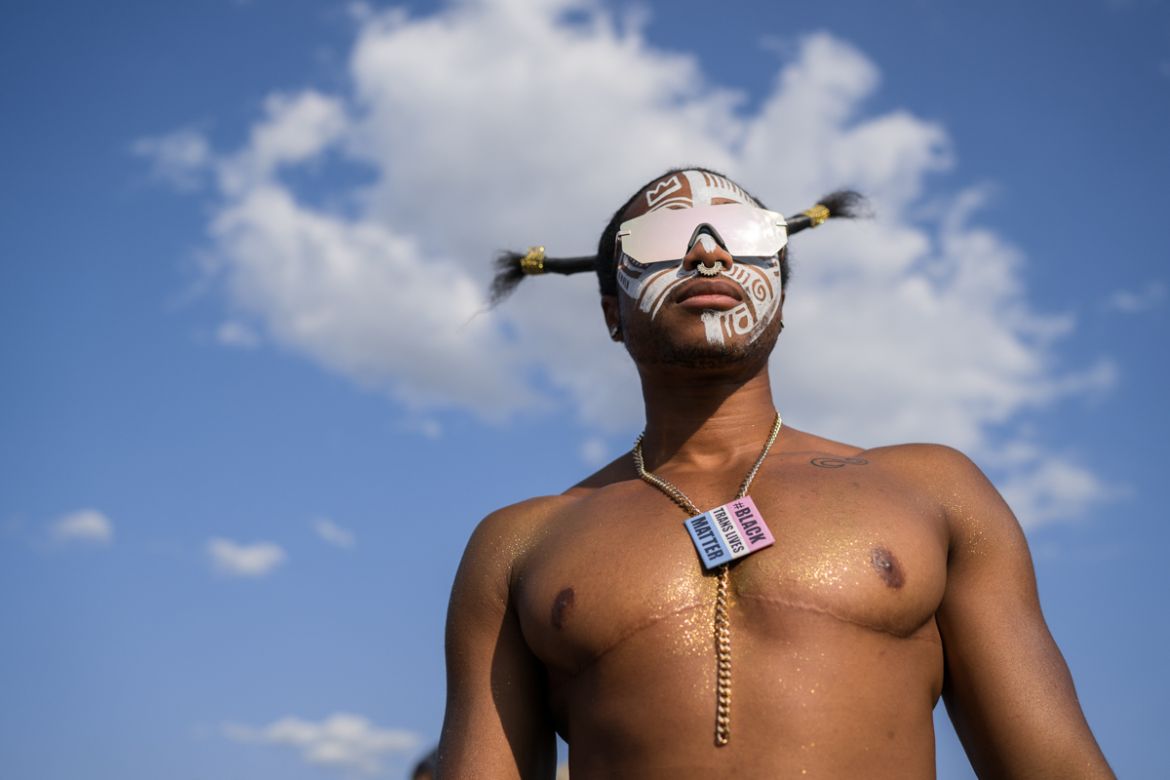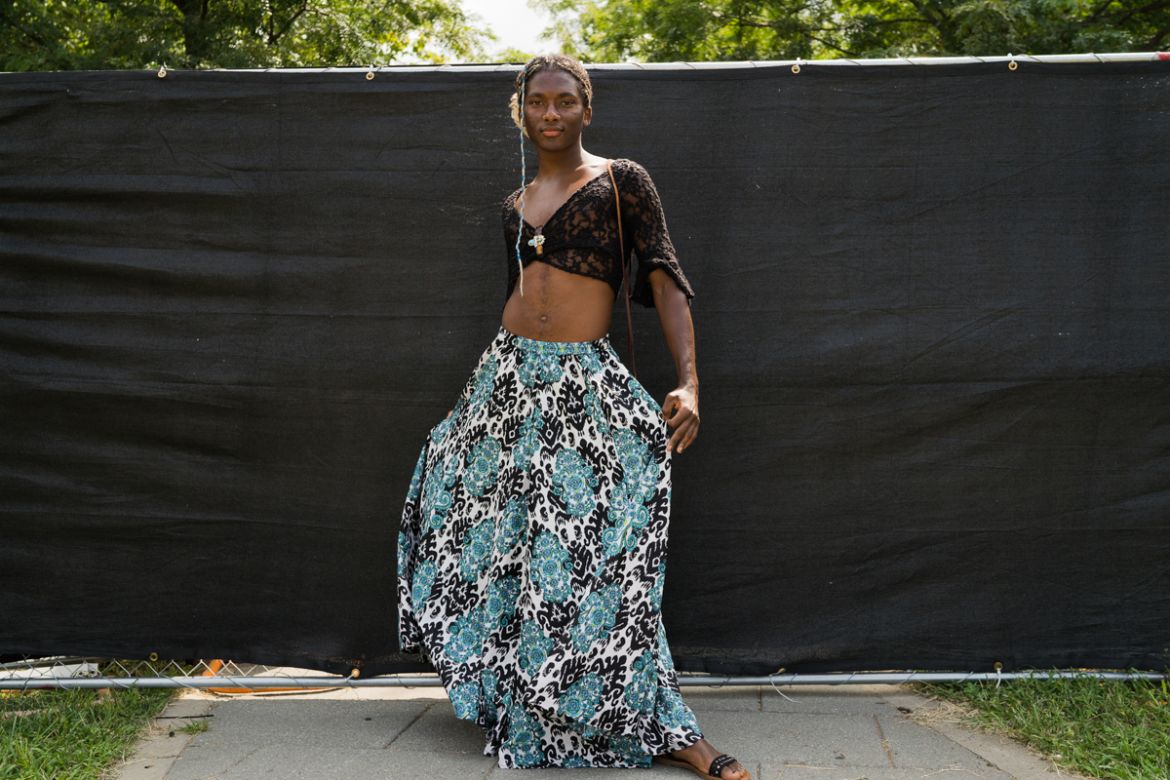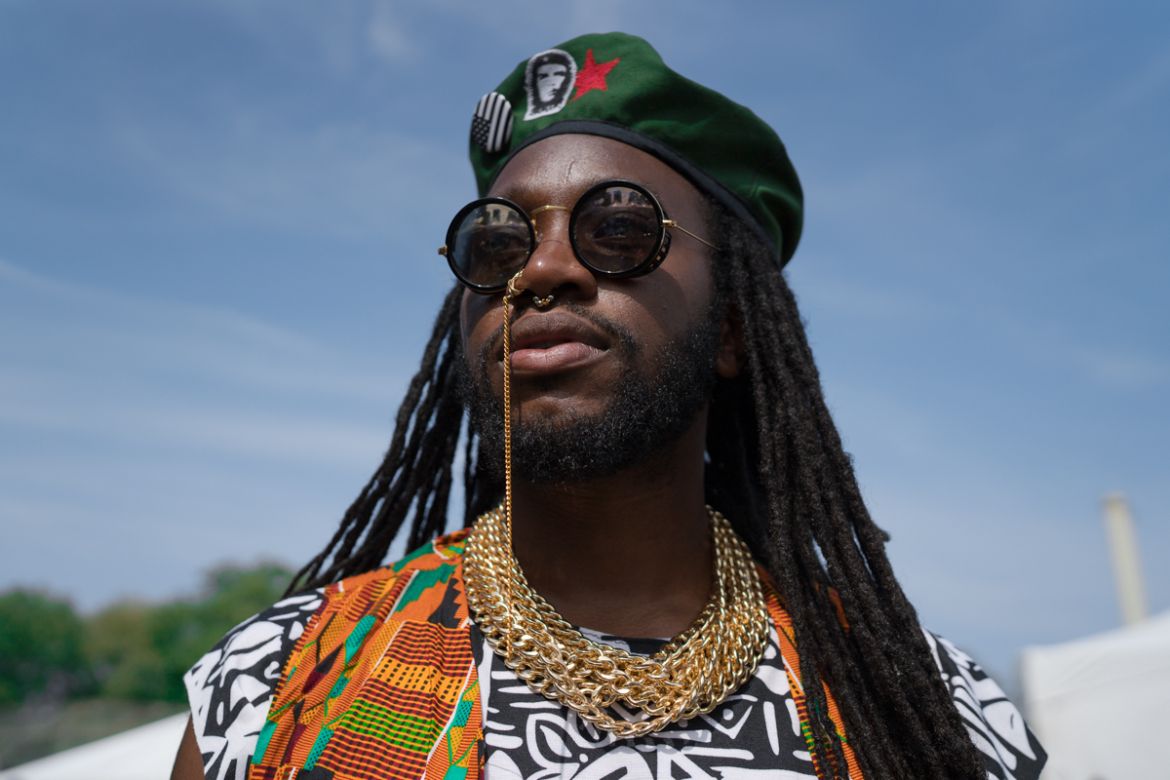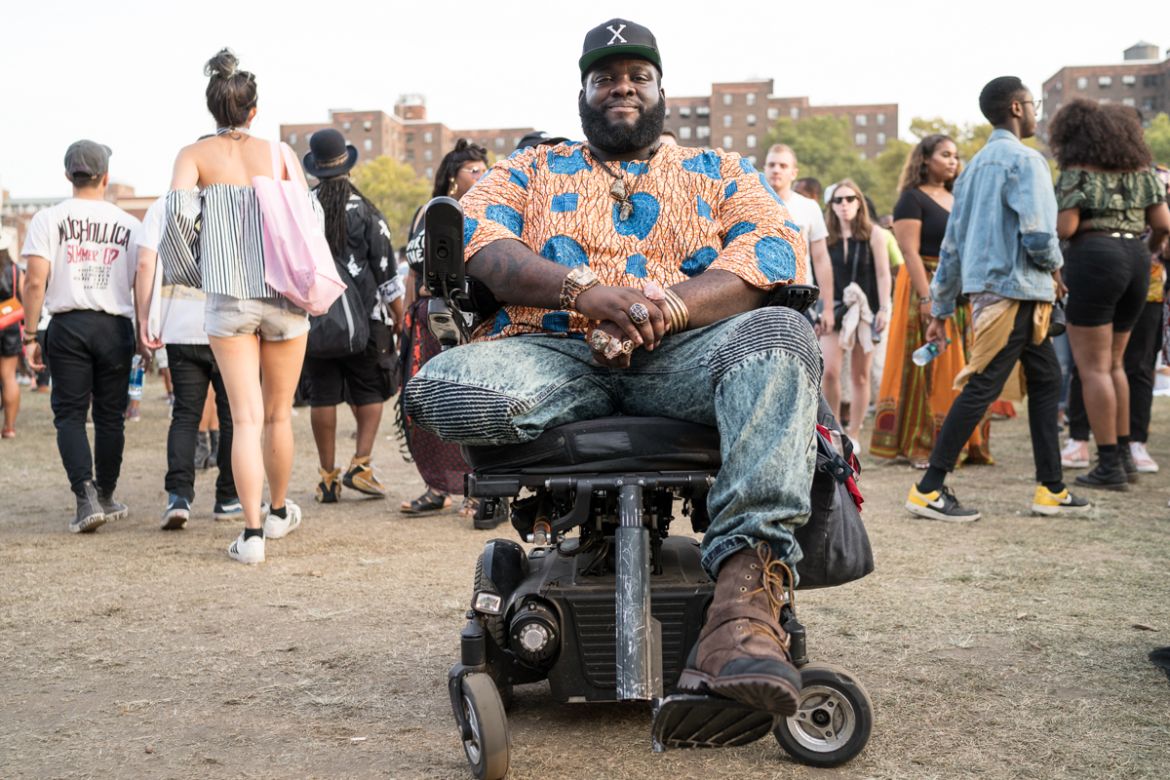In Pictures
Inside Afropunk: The most inclusive space in the US?
From an African American subculture to a global movement, bringing outsiders to the forefront and celebrating diversity.
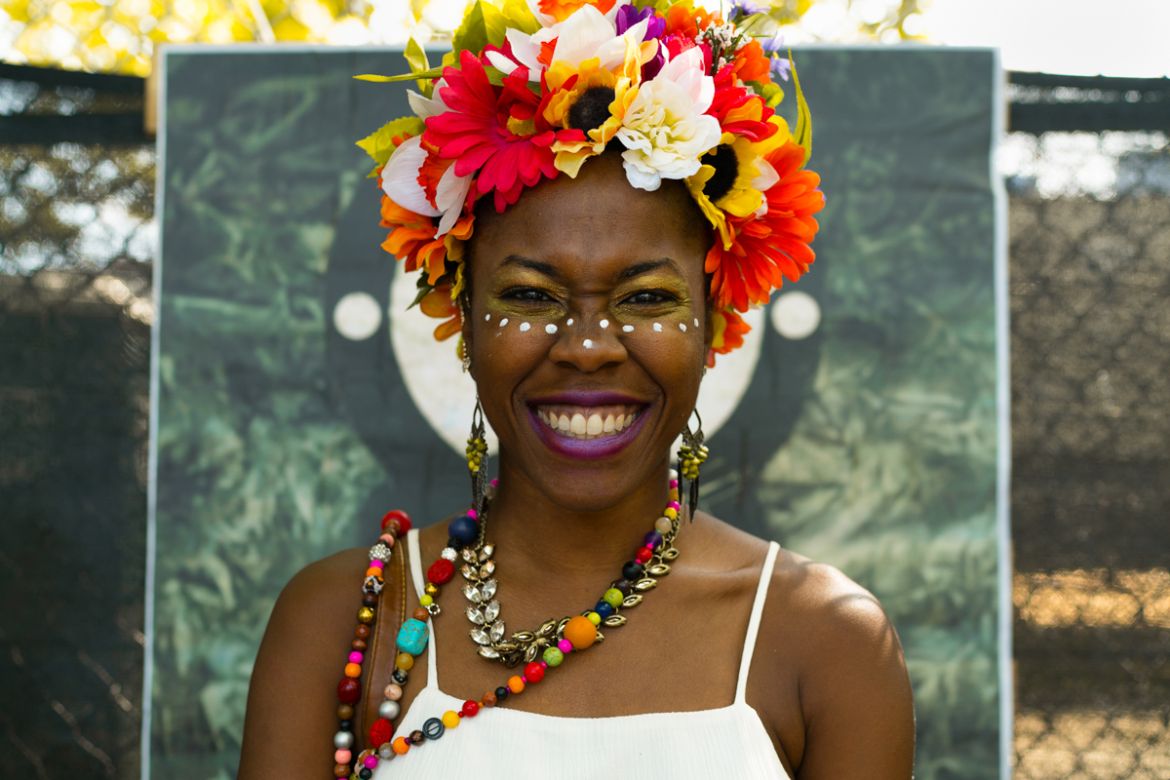
New York, United States of America – While white supremacy is resurging and hate groups are on the rise across the United States, Afropunk Festival is turning into a global celebration of black culture and diversity under the slogan: “No Sexism, No Racism, No Ageism, No Homophobia, No Fatphobia, No Transphobia, No Hatefulness.”
In a decade, Afropunk Festival has grown from a hundreds-large punk fest in New York’s Brooklyn borough, providing a space in punk culture that wasn’t predominantly white, to a full-blown black venture with annual festivals in London, Atlanta, Paris, and, for the first time later this year, Johannesburg. Organisers are also working to expand to Brazil. Last weekend, roughly 70,000 people attended the two-day festival in Brooklyn’s Commodore Barry Park.
While Afropunk is a high-performance music festival, over the years featuring black performers such as Lenny Kravitz, Lauryn Hill, Grace Jones, Kelis, D’ Angelo, Ice Cube, and Solange, it is just as much a showcase for personal style and uninhibited self-expression, pushing the boundaries of fashion and what society thinks it means to be black in the US.
